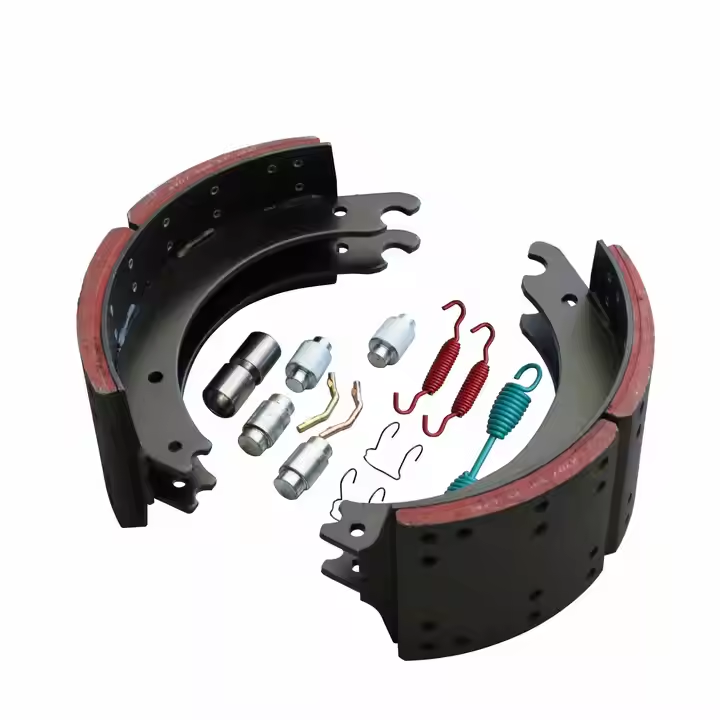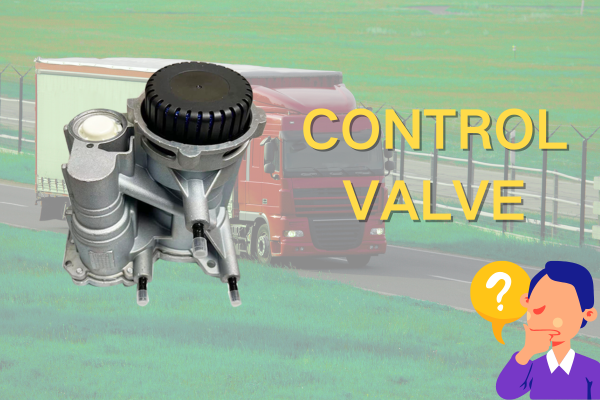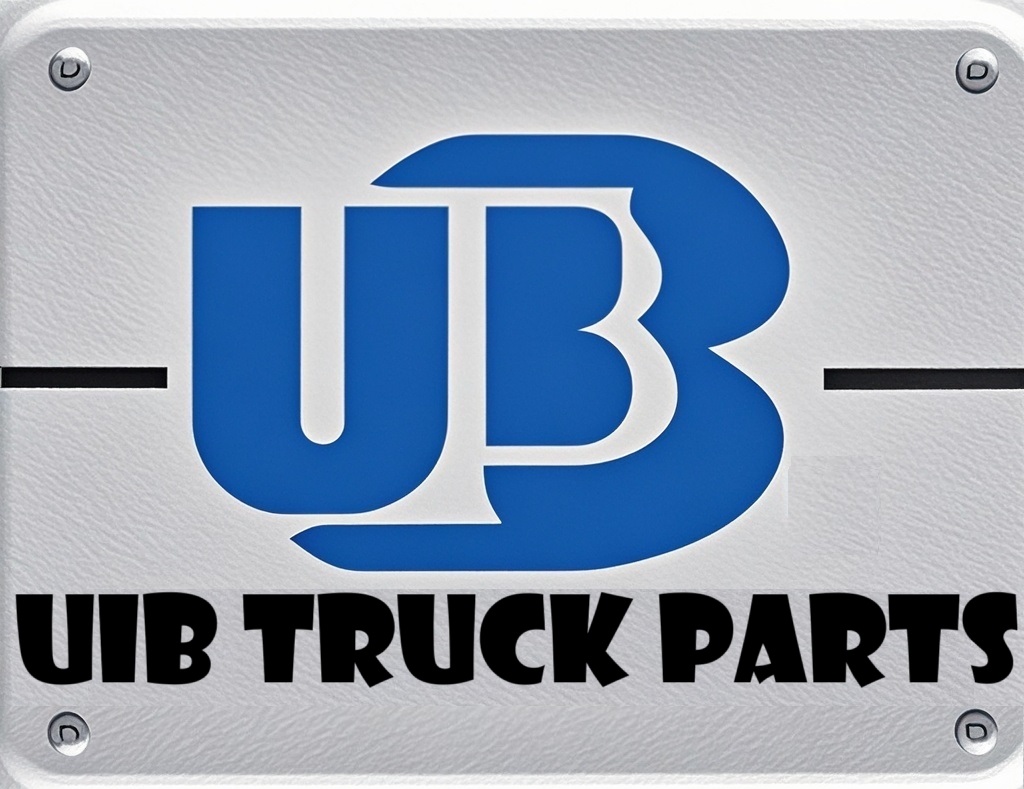About Us
A Deeper Dive into Truck Brake Shoes: Maintenance and Replacement Guide
Views : 224
Update time : 2025-06-20 15:19:00
A Deeper Dive into Truck Brake Shoes: Maintenance and Replacement Guide
I. Structure and Working Principle of Truck Brake Shoes
As a core component of the drum braking system, truck brake shoes are primarily composed of a metal shoe frame and friction material. The metal frame provides structural support, while the friction material directly contacts the brake drum to generate braking force. When the driver depresses the brake pedal, hydraulic pressure in the brake cylinder pushes the brake shoes outward, pressing them tightly against the inner wall of the rotating brake drum. This creates significant friction to decelerate or stop the truck.

II. Maintenance Key Points for Truck Brake Shoes
(1) Regular Wear Inspection
Regularly checking the thickness of the brake shoe friction material is crucial. Under normal conditions, the friction material should be no less than 2.5 mm thick. You can observe the wear degree through the inspection hole on the wheel, or have a professional technician conduct a comprehensive check during vehicle maintenance. If the friction material thickness approaches or is less than 2.5 mm, prompt action is needed.
(2) Keep the Braking System Clean
Braking generates significant friction dust, which can accumulate between the brake shoes and drum, affecting braking efficiency and potentially causing poor shoe return. Therefore, clean the braking system during each truck maintenance. Use compressed air to blow away dust inside the brake drum, and check if the brake shoe surface has oil stains or other impurities—clean them with a specialized cleaner if necessary.
(3) Check Brake Shoe Return Condition
Smooth return of brake shoes directly impacts the braking system's performance and service life. During inspection, gently push the brake shoes to observe if they return flexibly. If return is difficult, it may be due to an aged return spring or deformed brake backplate—replace related components promptly.
(4) Pay Attention to Abnormal Noises from Brake Shoes
If you hear unusual friction or squeaking sounds from the wheel area while driving, it is likely a problem with the brake shoes. This may occur when the friction material wears out, causing the metal frame to contact the brake drum directly. Upon hearing such noises, stop the vehicle immediately to inspect the brake shoes and avoid more severe damage.
III. Replacement Timing for Truck Brake Shoes
(1) Judgment Based on Wear Degree
As mentioned, when the friction material thickness of the brake shoes is less than 2.5 mm, replacement is mandatory. At this point, the friction force of the material is significantly reduced, failing to provide sufficient braking force and seriously affecting driving safety.
(2) Abnormal Wear Conditions
If the brake shoe friction material shows uneven wear (e.g., severe wear on one side and light wear on the other) or surface grooves, cracks, etc., replace the brake shoes immediately—even if the wear thickness hasn't reached the replacement standard. Such abnormal wear may result from brake cylinder failure, out-of-round brake drum, or inaccurate wheel alignment. When replacing brake shoes, also inspect and eliminate these underlying issues.
(3) Obvious Decline in Braking Performance
When you notice that the truck's braking distance increases or braking effectiveness significantly weakens, even if the brake shoe wear degree hasn't met the replacement standard, it may indicate a performance decline in the friction material. Conduct a comprehensive inspection of the braking system at this time and replace the brake shoes if necessary.
(4) Reaching the Specified Service Cycle
Although brake shoe replacement primarily relies on wear, if the truck is used frequently or drives in harsh road conditions, consider replacing the brake shoes after a certain period—even if wear isn't severe. Generally, brake shoes for heavy-duty trucks are recommended to be replaced every 80,000 to 100,000 kilometers, with the specific cycle adjusted based on vehicle usage and manufacturer suggestions.
IV. Conclusion
Truck brake shoes are vital components for ensuring driving safety, making proper maintenance and timely replacement essential. By regularly inspecting wear, keeping the braking system clean, monitoring shoe return, and noting abnormal noises, you can detect brake shoe issues promptly and take appropriate measures. Meanwhile, mastering the correct replacement timing avoids safety risks caused by brake shoe problems. If you encounter any difficulties during maintenance or replacement, consult a professional truck maintenance technician to ensure the normal operation of the braking system.
Related News
 Revealing Three Little-Known Facts About Trucks
Revealing Three Little-Known Facts About Trucks
Aug 06,2025
This article presents three little-known facts about trucks, including that the cab can be flipped for engine maintenance, the rearview mirrors are equipped with defrosting and deicing functions, and the small tank next to the fuel tank is an urea tank which is crucial for environmental protection. It helps readers understand the secrets behind truck designs and functions.
 Control Valve: The "Key Steward" in Truck Engines
Control Valve: The "Key Steward" in Truck Engines
Aug 05,2025
This article introduces the role of the control valve in the diesel pump, including controlling fuel quantity and stabilizing pressure; lists symptoms when it malfunctions, such as weakened power and increased fuel consumption; provides maintenance methods, and illustrates through cases that paying attention to the control valve can avoid unnecessary expenses.
 Control Valve: The "Invisible Commander" of Truck Power
Control Valve: The "Invisible Commander" of Truck Power
Aug 05,2025
The control valve is an indispensable core regulating component in the truck power system. Although it hides inside the machinery and keeps a low profile, it relies on its powerful functions to precisely command the rhythm of power output, comprehensively ensure driving safety, and intelligently adapt to various working conditions. With sophisticated design techniques and durable material selection, it can achieve a perfect balance between power and efficiency in various complex scenarios, and can be called the invisible cornerstone supporting the efficient and stable operation of trucks.
 Truck Snow Chains: Safety Guarantee on Icy and Snowy Roads
Truck Snow Chains: Safety Guarantee on Icy and Snowy Roads
Jul 28,2025
This article elaborates on truck snow chains, including their important role on icy and snowy roads, applicable scenarios, selection methods, installation steps, and usage precautions. It aims to provide references for truck drivers to drive safely in icy and snowy weather and reduce accidents caused by slippery roads.
